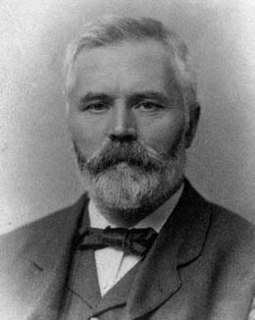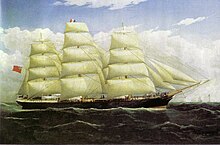The following is a timeline of low-temperature technology and cryogenic technology.

Edward Caird, FBA, FRSE was a Scottish philosopher. He was a holder of LL.D., DCL and DLitt.
James Moncreiff, 1st Baron Moncreiff of Tullibole LLD was a Scottish lawyer and politician.

James Murdoch Geikie PRSE FRS LLD was a Scottish geologist. He was professor of geology at Edinburgh University from 1882 to 1914.
John James Stevenson FRSE FSA FRIBA (1831–1908), often referred to as J. J. Stevenson, was a British architect of the late-Victorian era. He is particularly associated with the British Queen Anne revival style.

Sir Isaac Bayley Balfour, KBE, FRS, FRSE was a Scottish botanist. He was Regius Professor of Botany at the University of Glasgow from 1879 to 1885, Sherardian Professor of Botany at the University of Oxford from 1884 to 1888, and Professor of Botany at the University of Edinburgh from 1888 to 1922.

Dr Andrew Gray was a Scottish physicist and mathematician.

William Soltau Davidson was the New Zealand pioneer of refrigerated shipping.

John Aitken, FRS, FRSE was a Scottish meteorologist, physicist and marine engineer. He was one of the founders of cloud physics and aerosol science, who built the first apparatus to measure the number of dust and fog particles in the atmosphere, a koniscope.
Sir Francis Grant Ogilvie CB FRSE was a Scottish educator, museum director, and scientist.
Robert J. T. Bell RSE FRSE was a Scottish mathematician. He held the positions of Professor of Pure and Applied Mathematics and Dean of the Faculty of Arts and Science, at the University of Otago in Dunedin, New Zealand.

The County of Peebles was the world's first four-masted, iron-hulled full-rigged ship. She was built in 1875, by Barclay Curle Shipbuilders in Glasgow, Scotland, for the shipping firm R & J Craig of Glasgow. Measuring 81.2m long, with a beam of 11.8m, a draft of 7.1m and a cargo capacity of 1614 net tons, she was a state-of-the-art windjammer when she entered the jute trade between the ports of Dundee and Cardiff in Great Britain and Bombay and Calcutta / Hooghly River in East India. Her rig was in the 'Scottish style, with royal sails above double top-sails and single topgallants.
Alfred Charles Gardner FRSE MICE MIME (1880–1952) was a Scottish engineer. He designed vast station roofs and bridges for the Great Western Railway. In later life, he created the launch sites for RMS Queen Mary and RMS Queen Elizabeth in the Clyde shipyards.
Prof George Alexander Gibson FRSE LLD (1858–1930) was a Scottish mathematician and academic author.

Prof Andrew Jamieson CE FRSE (1849–1912) was a Scottish engineer and academic author.
Alexander Leslie FRSE PRSSA (1844–1893) was a Scottish civil engineer in the 19th century. He served as President of the Royal Scottish Society of Arts from 1890 until his premature death in 1893. He specialised in harbour works and reservoirs.
Dr James Burgess Readman FRSE FCS FSSA (c.1850–1927) was a Scottish chemist who invented an electric furnace for creating phosphorus invented in 1888 and patented in 1889.














